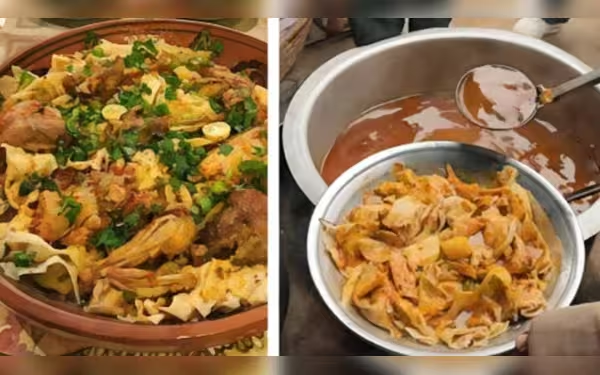Saturday, November 16, 2024 08:32 PM
Sobat: The Heart of Pashtun Hospitality in DI Khan
- Sobat symbolizes togetherness and Pashtun hospitality.
- Traditionally made with naan and flavorful broth.
- A cherished dish for special occasions in DI Khan.
 Image Credits: thefridaytimes
Image Credits: thefridaytimesExplore the significance of Sobat, a traditional Pashtun dish symbolizing hospitality and togetherness in DI Khan.
In the heart of Dera Ismail Khan (DI Khan) and the broader Pashtun belt, a dish known as "sobat" holds a special place in the culture and traditions of the people. Often referred to as "painda" among the Pashtun communities, sobat is not just a meal; it is a symbol of togetherness, hospitality, and the rich heritage of the region. This dish has a deep-rooted history and is a vital part of social gatherings, where families and friends come together to share a communal experience.
The term "sobat" comes from Urdu and Persian, meaning "companionship" or "gathering," which perfectly captures the essence of this dish. It is traditionally made with pieces of naan or flatbread that soak up a flavorful broth, usually made from mutton or chicken. The preparation of sobat begins with boiling the meat with a mix of aromatic spices like black pepper, cumin, and coriander. The use of organic, free-range chicken, known as "desi" chicken, is preferred for its rich flavor. The slow cooking process allows the spices to blend beautifully, creating a delicious broth that is the heart of the dish.
Once the broth is ready, large pieces of naan are torn into smaller chunks and placed in a wide, shallow dish. The hot broth is then poured over the bread, soaking it with its savory essence. Tender pieces of meat are placed on top, making sobat a hearty and satisfying meal. This dish is meant to be shared, and in Pashtun households, it is served on a large platter in the center of the gathering. Family and friends sit around the platter, breaking bread together and enjoying the meal with their hands. This act of sharing food fosters a sense of equality and unity among those present.
In DI Khan, sobat is not just a regular meal; it is a dish of honor, often prepared for special occasions like weddings and Eid celebrations. The host takes great care in its preparation, ensuring that the flavors are just right and that there is enough to feed everyone. This reflects the Pashtun tradition of "melmastia," or hospitality, where guests are treated as blessings. Serving sobat is one of the highest forms of respect and gratitude.
The history of sobat is intertwined with the socio-economic landscape of DI Khan. Its simple ingredients made it accessible to people from all walks of life. Over time, wealthier families began to add richer ingredients, but even in its simplest form, sobat remains a deeply satisfying dish that showcases the resourcefulness of the Pashtun people.
Preparing sobat is often a collaborative effort, with family members working together to tear the bread, stir the broth, and arrange the dish. This teamwork reflects the communal spirit of Pashtun society, where cooperation is valued. The preparation process is also a time for storytelling and laughter, strengthening familial bonds and making the meal a holistic experience.
Today, sobat is gaining popularity among the youth, with some modern adaptations. Urban households and restaurants may use quicker cooking methods, but the essence of the dish remains unchanged. Families still gather around a single platter, upholding the tradition of communal dining. In rural areas, the preparation of sobat continues to follow age-old methods, preserving its authentic taste and aroma.
Ultimately, sobat is more than just a dish; it is a cultural treasure that embodies the spirit of togetherness. Each bite carries the weight of history and the warmth of human connection. In a world that often feels disconnected, sobat serves as a beautiful reminder of the joy that comes from sharing a meal with loved ones. It is a dish that not only nourishes the body but also feeds the soul, making it a cherished part of Pashtun culture.













